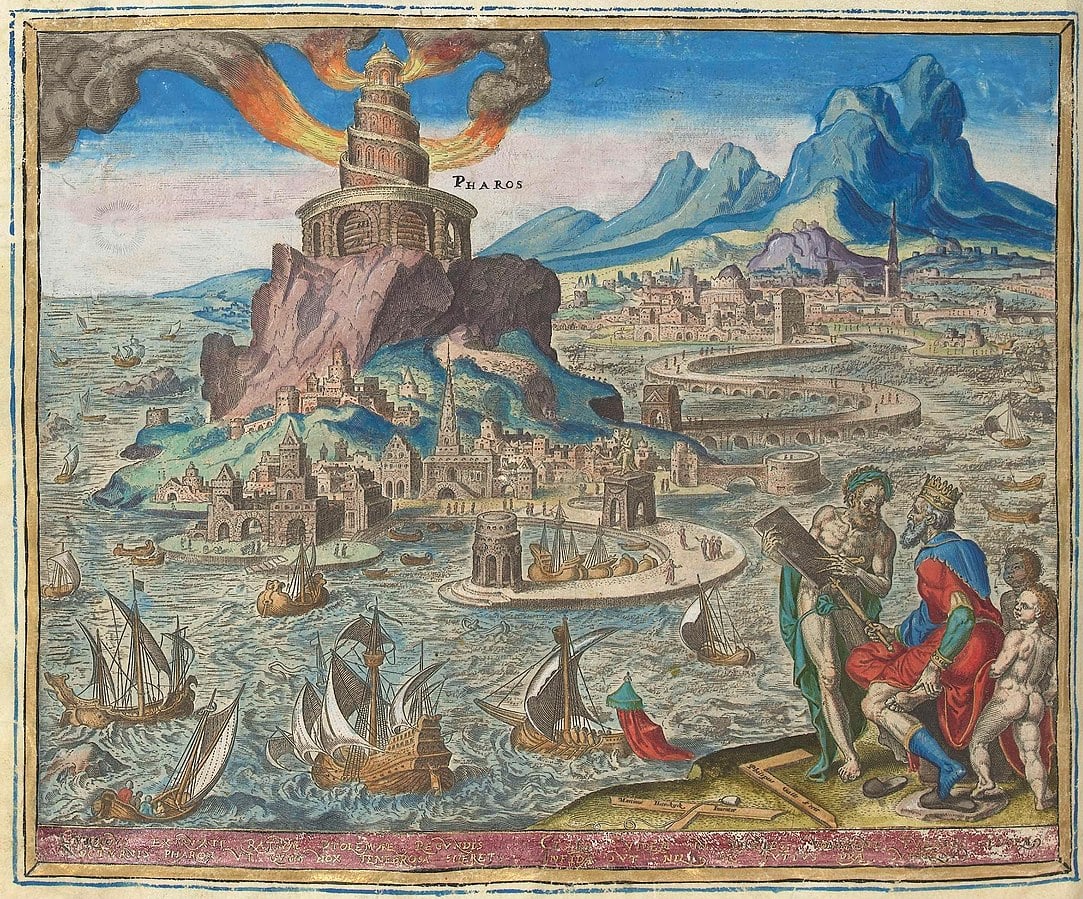
Contact between the Mediterranean and China was practically non-existent in the ancient and medieval periods; however, in the 13th century, a Chinese official described the city of Alexandria in his extensive work on geography.
Zhao Rukuo was a Chinese official and member of the ruling Song Dynasty imperial clan. Between 1224 and 1225, he authored Zhu Fan Zhi, which when translated means A Description of Barbarian Nations or Records of Foreign People.
Despite the immense distance between China and the Mediterranean world, which limited direct contact between these civilizational groups, Zhao Rukuo was able to describe the ancient Lighthouse of Alexandria in detail, albeit with many exaggerations.
Zhu Fan Zhi
Given the lack of direct contact between the Mediterranean and China in the 13th century, it is quite remarkable that a Chinese official was able to describe the city of Alexandria.
Traveling by sea or land in the 13th century was arduous, time-consuming, and dangerous. Trade did pass between China and the Mediterranean world via the Silk Road, but goods changed many hands and direct contact between East Asian and Mediterranean peoples was extremely limited.
Zhao Rukuo was able to gather information about distant lands during his time spent as a supervisor of the maritime trade in Quanzhou, Fujian Province. As a trade supervisor, he spoke frequently with merchants, studied maps, and examine a multitude of foreign goods. He never traveled out of southern China himself but used the information he learned from others to write Zhu Fan Zhi, which includes descriptions of nearly 60 foreign countries.
Chinese perceptions of Alexandria in the 13th century
In the text, Zhao Rukuo refers to Alexandria as “Egentuo”. This was a Cantonese transliteration of al-ʾIskandariyya, the Arabic name for Alexandria. Egypt is likewise referred to by the unfamiliar name of “Wusili”.
The Chinese author described the Lighthouse of Alexandria as a giant tower by the sea. “They have a legend that in ancient times, an extraordinary man named Cugeni built a great tower by the sea,” the text reads. “At its base, he had two vaults dug and reinforced strongly with bricks. One of these vaults is used to store grain, and the other to store weapons.”
Cugeni probably refers to Alexander the Great and is likely a Cantonese transliteration of Dhu al-Qarnayn, a legendary Islamic figure typically identified with Alexander the Great. However, it was actually Ptolemy I Soter, one of Alexander’s generals and founder of the Ptolemaic Dynasty, who commissioned the construction of the lighthouse.
Zhao Rukuo believed that the tower was “two thousand feet tall” and that the entire population of the city could fit inside in case of a siege. In reality, the Lighthouse of Alexandria was about 338 to 387 feet tall and its capacity to hold people was far below the figure of 20,000 given by Zhao Rukuo.
Nevertheless, the Lighthouse of Alexandria would have been an impressive sight and was regarded as one of the Seven Wonders of the World. It was built with large blocks of light-colored stone and could project light 29 miles (47 km) out to sea.
Zhao Rukuo also described the tower’s maritime defensive measures. According to the Chinse official “On the tower’s summit, there used to be a very large mirror. If a fleet from another country came to invade, the mirror reflected their image in advance and the people could then begin preparing to defend themselves.”
See all the latest news from Greece and the world at Greekreporter.com. Contact our newsroom to report an update or send your story, photos and videos. Follow GR on Google News and subscribe here to our daily email!



